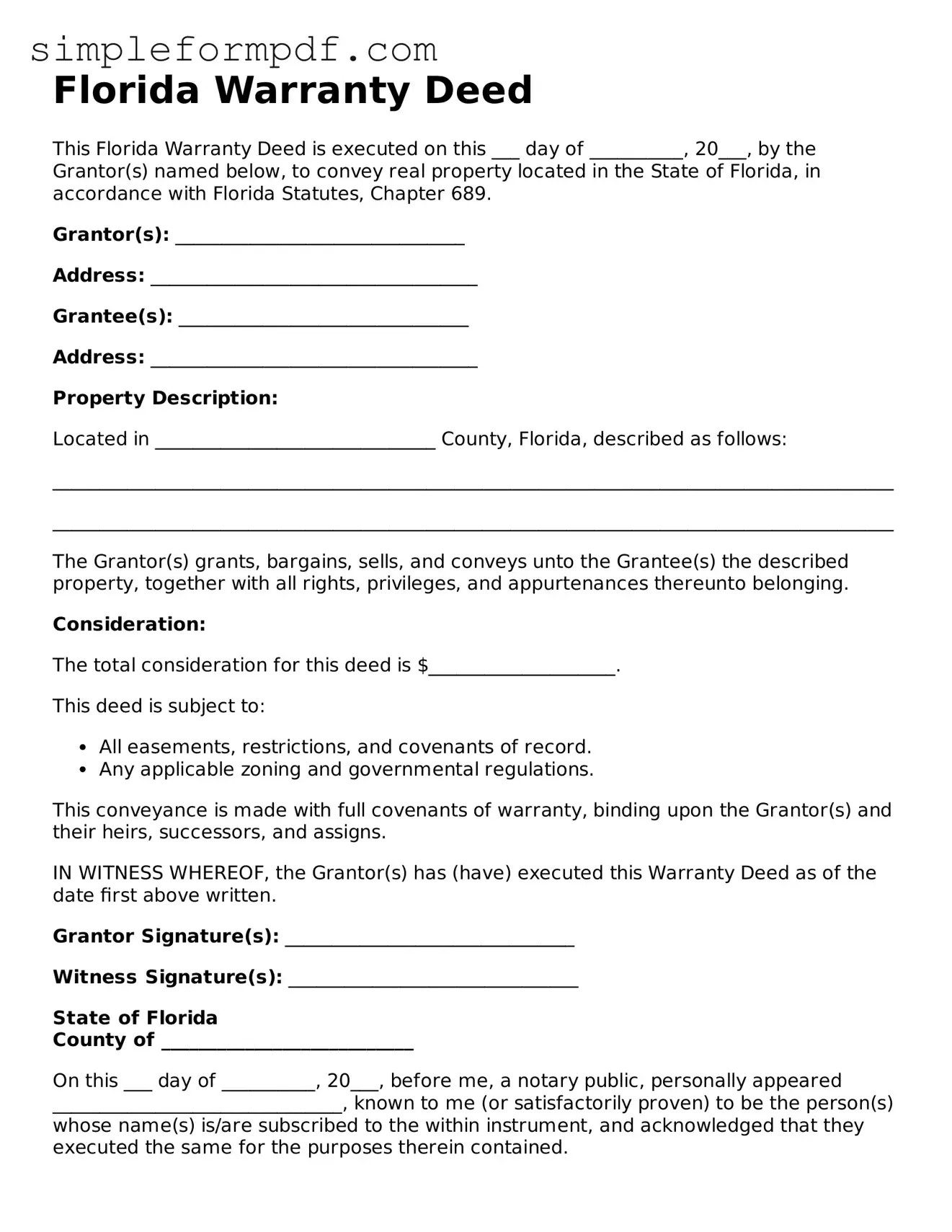Florida Warranty Deed
This Florida Warranty Deed is executed on this ___ day of __________, 20___, by the Grantor(s) named below, to convey real property located in the State of Florida, in accordance with Florida Statutes, Chapter 689.
Grantor(s): _______________________________
Address: ___________________________________
Grantee(s): _______________________________
Address: ___________________________________
Property Description:
Located in ______________________________ County, Florida, described as follows:
__________________________________________________________________________________________
__________________________________________________________________________________________
The Grantor(s) grants, bargains, sells, and conveys unto the Grantee(s) the described property, together with all rights, privileges, and appurtenances thereunto belonging.
Consideration:
The total consideration for this deed is $____________________.
This deed is subject to:
- All easements, restrictions, and covenants of record.
- Any applicable zoning and governmental regulations.
This conveyance is made with full covenants of warranty, binding upon the Grantor(s) and their heirs, successors, and assigns.
IN WITNESS WHEREOF, the Grantor(s) has (have) executed this Warranty Deed as of the date first above written.
Grantor Signature(s): _______________________________
Witness Signature(s): _______________________________
State of Florida
County of ___________________________
On this ___ day of __________, 20___, before me, a notary public, personally appeared _______________________________, known to me (or satisfactorily proven) to be the person(s) whose name(s) is/are subscribed to the within instrument, and acknowledged that they executed the same for the purposes therein contained.
In witness whereof, I hereunto set my hand and official seal.
Notary Public Signature: _______________________________
Commission No: _______________________________
My Commission Expires: _______________________________
